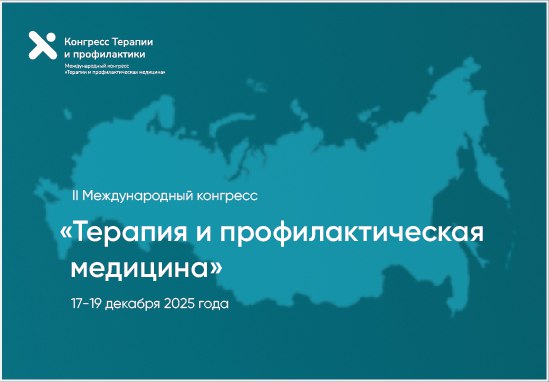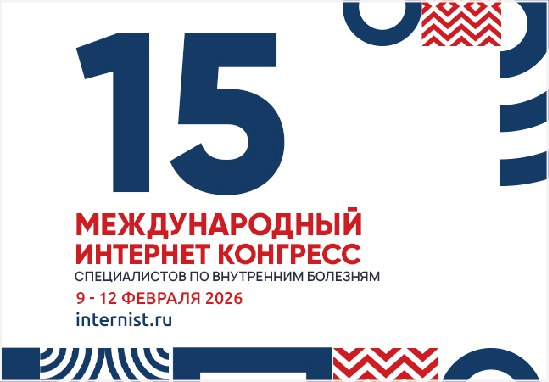КИШЕЧНАЯ МИКРОБИОТА — НОВЫЙ ИГРОК В ПАТОГЕНЕЗЕ АТЕРОСКЛЕРОЗА
https://doi.org/10.15829/1728-8800-2014-6-56-61
Аннотация
В статье представлен обзор современной литературы, обобщающий экспериментальные и клинические данные о роли кишечной микробиоты в развитии атеросклероза. Микрофлора кишечника является своеобразным маркером состояния макроорганизма, реагируя на возрастные, физиологические, диетические, климато-географические факторы изменением качественного и количественного составов. Показано, что L-карнитин и холин, получаемые с пищей, используются микрофлорой кишечника для синтеза три-метиламина, который быстро окисляется флавинмонооксигеназой в печени до триметиламин–N-оксида, вызывающего развитие атеросклероза и повышающего риск развития сердечно-сосудистых заболеваний.
Об авторах
Л. В. ЕгшатянРоссия
к.м.н., м.н.с. отдела изучения старения и профилактики возраст-ассоциированных заболеваний
Тел./факс: +7 (926) 860-79-55
О. Н. Ткачева
Россия
д.м.н., профессор, первый заместитель директора по научной и лечебной работе
С. А. Бойцов
Россия
д.м.н., профессор, директор
Список литературы
1. Strazhesko I, Akasheva D, Dudinskaya E, Tkacheva O. Vascular ageing: main symptoms and mechanisms. Cardiovascular Therapy and Prevention 2012; 11(4): 93-100. Russian (Стражеско И. Д., Акашева Д. У., Дудинская Е. Н., Ткачева О. Н. Старение сосудов: основные признаки и механизмы. Кардиоваскулярная терапия и профилактика 2012; 11(4): 93-100).
2. Ross R. The pathogenesis of atherosclerosis: a perspective for the 1990s. Nature 1993; 362: 801-9.
3. Bernstein AM, Sun Q, Hu FB, et al. Major dietary protein sources and risk of coronary heart disease in women. Circulation 2010; 122: 876-83.
4. Micha R, Wallace S, Mozaffarian D. Red and processed meat consumption and risk of incident coronary heart disease, stroke, and diabetes mellitus: a systematic review and meta-analysis. Circulation 2010; 121: 2271-83.
5. Siri-Tarino P, Sun Q, Hu F, et al. Meta-analysis of prospective cohort studies evaluating the association of saturated fat with cardiovascular disease. Am J Clin Nutr 2010; 91: 535-46.
6. Wang Z, Klipfell E, Bennett B, et al. Gut flora metabolism of phosphatidylcholine promotes cardiovascular disease. Nature 2011; 472: 57-63.
7. Claesson MJ, Cusack S, O’Sullivan O, et al. Composition, variability, and temporal stability of the intestinal microbiota of the elderly. Proc Natl Acad Sci USA 2011; 108: 4586-91.
8. Glass CK and Olefsky JM. Inflammation and lipid signaling in the etiology of insulin resistance. Cell Metabolism 2012; 15(5): 635-45.
9. Snel M, Jonker J, Schoones J, et al. Ectopic Fat and Insulin Resistance: Pathophysiology and Effect of Diet and Lifestyle Interventions. Internat J Endocrinol 2012; (2): 1-18.
10. Koeth RA, Wang Z, Levison BS, et al. Intestinal microbiota metabolism of L-carnitine, a nutrient in red meat, promotes atherosclerosis. Nat Med 2013; 19: 576-85.
11. Rebouche C, Mack D, Edmonson P, et al. L-Carnitine dissimilation in the gastrointestinal tract of the rat. Biochemistry 1984; 23: 6422-6.
12. Rebouche C, Seim H. Carnitine metabolism and its regulation in microorganisms and mammals. Ann Rev Nutr 1998; 18: 39-61.
13. Tang W, Wang Z, Levison B, et al. Intestinal microbial metabolism of phosphatidylcholine and cardiovascular risk. N Engl J Med 2013; 368(17): 1575-84.
14. Jernberg C, Lofmark S, Edlund C, et al. Long-term impacts of antibiotic exposure on the human intestinal microbiota. Microbiology 2010; 156 (11): 3216-23.
15. Key TJ, Fraser GE, Thorogood M, et al. Mortality in vegetarians and nonvegetarians: detailed findings from a collaborative analysis of 5 prospective studies. Am J Clin Nutr 1999; 70: 516S-24.
16. Huang T, Yang B, Zheng J, et al. Cardiovascular disease mortality and cancer incidence in vegetarians: a meta-analysis and systematic review. Ann Nutr Metab 2012; 60: 233-40.
17. US Department of Agriculture and US Department of Health and Human Services. Report of the Dietary Guidelines Advisory Committee on the dietary guidelines for Americans, 2010. Available at: http://www.cnpp.usda.gov/DGAs2010-DGACReport. htm. Accessed on August 31, 2010
18. Tuso P, Ismail M, Ha B, et al. Nutritional update for physicians: plant-based diets. Perm J 2013; 17: 61-6.
19. Takahashi Y, Sasaki S, Okubo S, et al. Blood pressure change in a free-living population-based dietary modification study in Japan. J Hypertens 2006; 24: 451-8.
20. Ornish D, Brown S, Scherwitz L, et al. Can lifestyle changes reverse coronary heart disease? The Lifestyle Heart Trial. Lancet 1990; 336: 129-33.
21. de Lorgeril M, Salen P, Martin J. Mediterranean diet, traditional risk factors, and the rate of cardiovascular complications after myocardial infarction: final report of the Lyon Diet Heart Study. Circulation 1999; 99: 779-85.
22. Zeisel S, Mar M, Howe J, et al. Concentrations of choline-containing compounds and betaine in common foods. J Nutr 2003; 133: 1302-7.
23. Demarquoy J, Georges B, Rigault C, et al. Radioisotopic determination of L-carnitine content in foods commonly eaten in western countries. Food Chem 2004; 86: 137-42.
24. Estruch R, Ros E, Salas-Salvadо J, et al. Primary Prevention of Cardiovascular Disease with a Mediterranean Diet. N Engl J Med 2013; 368 (14): 1279-90.
25. Wu GD, Chen J, Hoffmann C, et al. Linking long-term dietary patterns with gut microbial enterotypes. Science (New York) 2011; 334: 105-8.
26. Karlsson F, Fak F, Nookaew I, et al. Symptomatic atherosclerosis is associated with an altered gut metagenome. Nat Commun 2012; 3: 1245.
Рецензия
Для цитирования:
Егшатян Л.В., Ткачева О.Н., Бойцов С.А. КИШЕЧНАЯ МИКРОБИОТА — НОВЫЙ ИГРОК В ПАТОГЕНЕЗЕ АТЕРОСКЛЕРОЗА. Кардиоваскулярная терапия и профилактика. 2014;13(6):56-61. https://doi.org/10.15829/1728-8800-2014-6-56-61
For citation:
Egshatyan L.V., Tkacheva O.N., Boytsov S.A. GUT ENTEROBIOTA — A NEW PLAYER IN ATHEROSCLEROSIS PATHOGENESIS. Cardiovascular Therapy and Prevention. 2014;13(6):56-61. (In Russ.) https://doi.org/10.15829/1728-8800-2014-6-56-61
























































